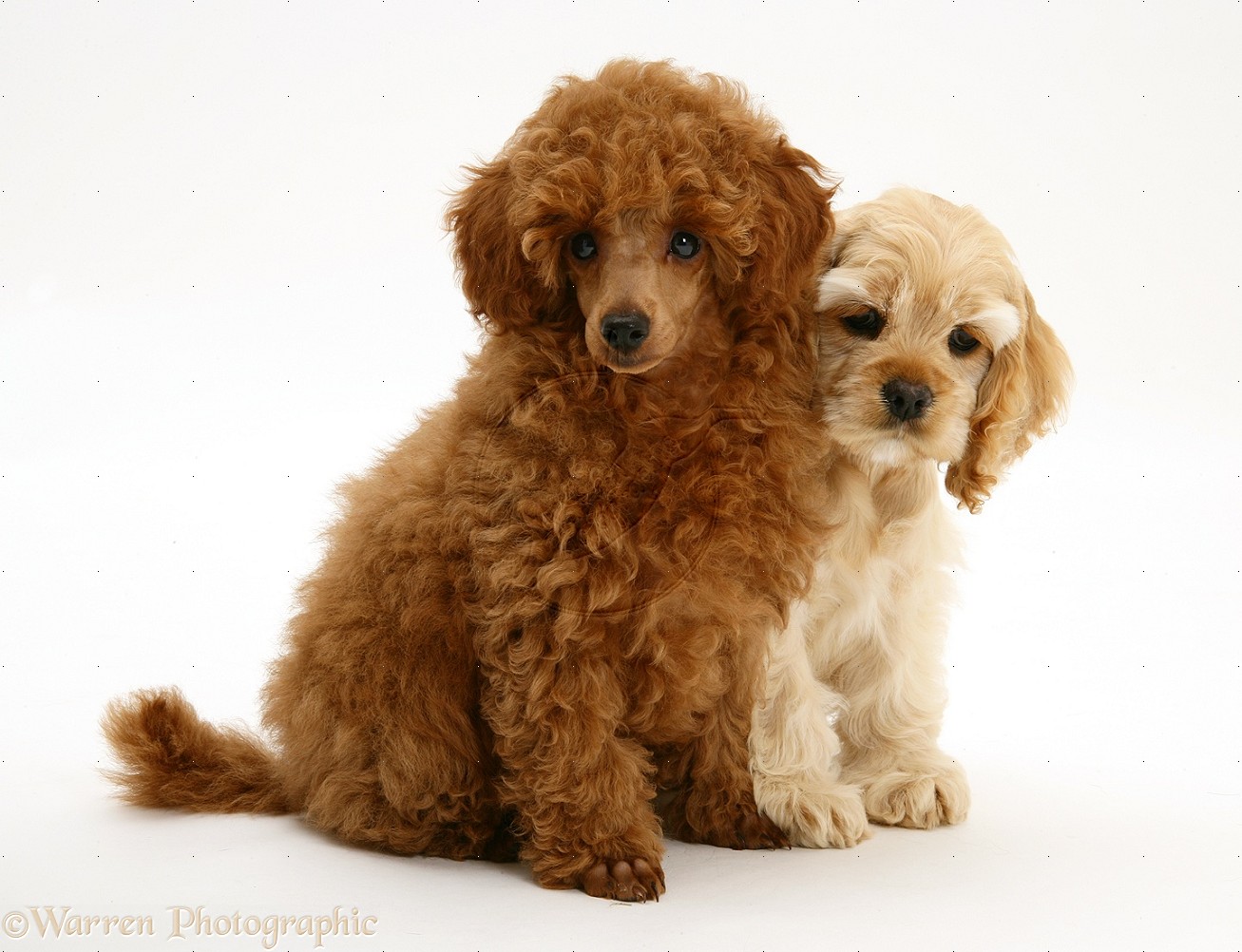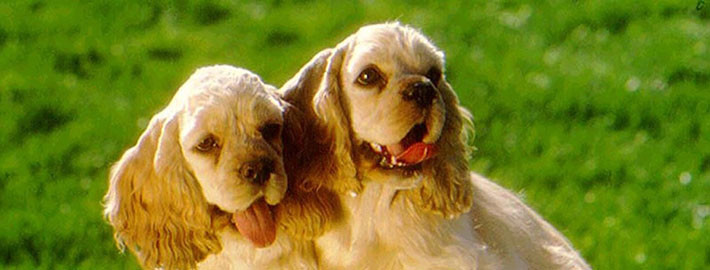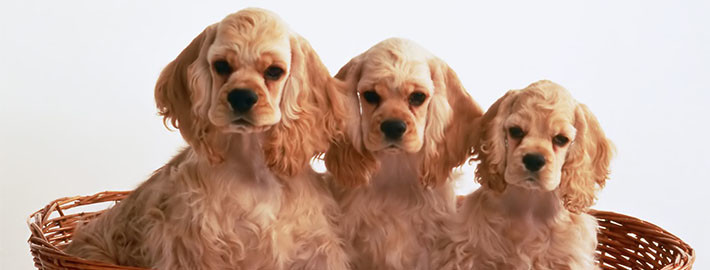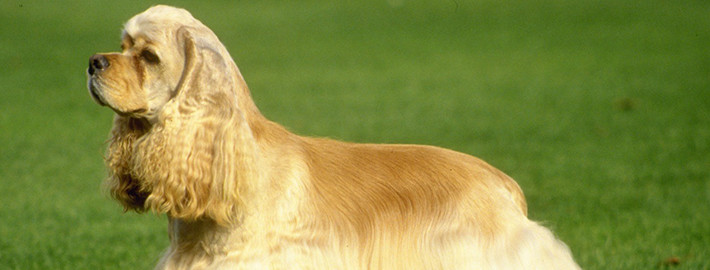What makes the American Cocker Spaniel Unique?
A sweet-tempered, medium sized dog that is ideal for moderately active families, the Cocker Spaniel is sure to charm its way into the hearts of all those it meets. This people pleasing breed does require regular grooming, but those that get to know these dogs will find the effort well worth it.
Page Contents

SnapShot
Is the American Cocker Spaniel Right For You?
Despite their small size, the Cocker Spaniel is still an active Sporting breed that needs daily exercise. Regular brushing and a trim every few months helps keep the coat free of mats. Cockers are intelligent, gentle dogs that thrive as part of a family. If you are considering purchasing a Cocker Spaniel puppy, check this:
In 5 Words
- Affectionate
- Loving
- Intelligent
- Easy to train
- Active
Characteristics
Learn About the American Cocker Spaniel
Description
General
The smallest member of the sporting group, the Cocker Spaniel should be compact and sturdy. Its ground covering gait is both strong and effortless. Excessive coats can hinder the dog in the field, so these dogs should be kept trimmed. Cocker Spaniels should have the breed’s trademark soft and appealing expression. Though seldom used for its original purpose, the Cocker Spaniel should still be able to spend a day in the field. Therefore, the dogs should be well-balanced and athletic.
Size
Cocker Spaniels measuring from 13 ½ inches to 15 ½ inches at the shoulder are completely acceptable in the show ring, though the ideal height is 14 inches high in female dogs and 15 inches tall in male dogs. Cocker Spaniels should also weigh between 11 and 14 kilograms.
Coat
These dogs have silky coat, which can be either flat or slightly wavy. However, overly long coats are not acceptable. Cocker Spaniels’ coats come in several varieties including black, solid colors, and partially colored. In partially colored breeds, one color will be white and the other will be red, black, roan, or brown. Tan spots ranging from pale to reddish in color are allowed on the dogs as long as the tan areas do not take up more than 10% of a dog’s coloration. White splashes are permitted on the throat and chest areas for black or solid color animals.
Short History of the Spaniels
Spaniels were first mentioned in texts dating from around the 14th century., which makes them among the oldest known dog breeds. Originally there were water and land spaniels, with the latter category being divided based on size. The smaller land spaniels were known as Cocker Spaniels. Initially, this breed was used as game dogs to flush out water birds known as woodcocks, hence their name.
Spaniels have been mentioned in stories by both Chaucer (1342-1400) and Shakespeare (1564-1616). This breed even played a part in England’s separation from the Catholic Church when Lord Wiltshire’s Cocker Spaniel allegedly bit Pope Clement VIII on the toe. The earliest English colonists in the New World brought a spaniel along with them on the Mayflower. In 1878, the Cocker Spaniel breed was recognized by the American Kennel Club (AKC) and placed in the sporting dogs category. It remains in use to this day as both a family pet and hunting dog.
Temperament
American Cocker Spaniel has often been referred to as the “merry cocker” and AKC breed standards state that these dogs should not be timid creatures. Instead, these spaniels are playful, energetic, and sweet. They make very obedient pets, as Cocker Spaniels will do their best to please their human owners. Thier friendly and loving disposition makes these dogs ideal companions for anyone. This breed is also good with other pets. Cocker Spaniels are not ideally suited to being left alone for long periods of time, but they will tolerate being left to their own devices for shorter periods as long as they receive proper exercise and plenty of attention when their owners are home. Cocker Spaniels are not mentally able to live outside, due to their highly social natures.
While there are some grooming requirements that go along with owning one of these beautiful dogs, the Cocker Spaniel’s silky coat is relatively easy to maintain, even if the dog spends a great deal of time outdoors. In fact, American Cocker Spaniels are equally suited to life as a gundog or as a household pet. This breed is of average intelligence and is overall quite respectful of its master’s authority.
As with any dog breed, Cocker Spaniels do have their share of occasional problems. Some of these dogs are prone to excessive barking and others may become overly submissive or shy if not correctly trained when they are young. These dogs also have a tendency to become overweight, so their owners should pay especial attention to their diets and take care to not accidentally overfeed them.
Caring for Your American Cocker Spaniel
General Health
Some serious health problems that often occur in Cocker Spaniels include progressive retinal atrophy (PRA), cataracts, patellar luxation, and glaucoma. Diseases such as elbow dysplasia, gastric torsion, and epilepsy can occasionally affect the breed. Other minor health problems that the American Cocker Spaniel suffers from include cardiomyopathy, ectropion, urinary stones, otitis externa, canine hip dysplasia (CHD), hypothyroidism, seborrhea, phosphofructokinase deficiency, entropion, “cherry eye,” liver disease, allergies, and congestive heart failure. Routine checkups during annual veterinarian visits can help owners catch the aforementioned ailments before they become overly problematic. DNA testing may be required in order to diagnose phosphofructokinase deficiency, which can cause anemia.
Care
Daily
While Cocker Spaniels enjoy playing with their human families on a regular basis, they will still need a long daily walk.
Weekly
Cocker Spaniels should be brushed two or three times a week, in order to keep their long coats clean. Their furry feet also tend to carry debris. Therefore, cleaning a Cocker Spaniel’s paws with dog wipes after it has been out for a walk is a good idea. Special attention should also paid to ear and eye cleanliness in this breed in order to prevent infections.
Monthly
As with any dog breed, the Cocker Spaniel should have flea, tick, and heartworm prevention medication administered on a monthly basis. Their toenails should be clipped as needed.
Grooming & Bathing
Cocker spaniels require a great deal of grooming. If their coats are kept clipped in a “puppy cut”, a dog will nonetheless need to be washed every other week. For those with longer coats, a weekly bath is ideal. Professional grooming is recommended every two to three months.
Exercise & Training
While these dogs are said to have a good level of intelligence and trainability in most respects, they still can be difficult to housebreak. Cocker Spaniels nonetheless love the physical and mental stimulation that obedience training provides them. They also enjoy trying new things and spending time with their human owners, so this breed would definitely benefit from dog training classes.
Cocker Spaniels need firm, loving leadership as they tend to be a sensitive breed that responds very badly to stern tones or harsh discipline. Owners should still take care not to allow this breed to believe it is the pack leader. As with any dog breed, these pets work best with positive reinforcement training and treats used as rewards. Given that Cocker Spaniels are prone to becoming overweight, caution should be exercised when passing out treats.












